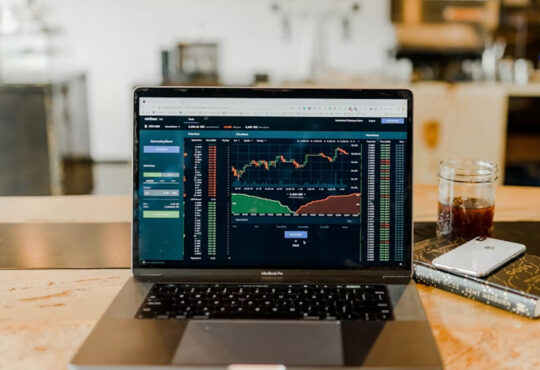
The rapid digitization of the global economy has given rise to innovative financial solutions, and one of the most notable developments is the Digital Yuan. China’s Digital Yuan, also known as the Central Bank Digital Currency (CBDC), has gained significant attention for its potential to revolutionize the way transactions are conducted. In this article, we will delve into the advanced measures taken to secure transactions with Digital Yuan and explore the underlying technologies and strategies that safeguard this digital currency. In addition, you can find an investment education company to start your learning journey by visiting Yuan Global education firms.
The Foundation of Digital Yuan Security
Blockchain Technology in the Digital Yuan
The backbone of the Digital Yuan’s security lies in blockchain technology. It operates on a distributed ledger system, which records all transactions across a decentralized network of computers. This transparency and immutability make it exceedingly difficult for malicious actors to tamper with transaction data.
Encryption and Cryptography Protocols
To protect the privacy and security of transactions, Digital Yuan utilizes state-of-the-art encryption and cryptography protocols. These cryptographic techniques ensure that sensitive data, such as wallet addresses and transaction details, remain confidential and secure from interception.
Immutable Ledger and Transparency
The immutable nature of the blockchain ledger means that once a transaction is recorded, it cannot be altered or deleted. This not only enhances security but also provides transparency, allowing users to verify transactions independently.
Cybersecurity Threats to Digital Yuan Transactions
Hacking and Unauthorized Access
Digital Yuan is not immune to hacking attempts and unauthorized access. Cybercriminals employ various tactics to breach digital wallets and steal funds. Robust security measures are essential to protect against these threats.
Phishing Attacks and Social Engineering
Phishing attacks and social engineering techniques can deceive users into revealing their private keys or providing access to their Digital Yuan accounts. Education and awareness are crucial to mitigate these risks.
Insider Threats and Data Leaks
Insider threats pose a significant risk, as individuals with access to Digital Yuan systems may abuse their privileges. Stringent access controls and monitoring are necessary to prevent insider attacks and data leaks.
Counterfeit Digital Yuan
Just like physical currency can be counterfeited, digital currencies are vulnerable to counterfeiting attempts. Digital Yuan employs advanced cryptographic features to make counterfeiting extremely challenging.
Advanced Security Measures
Multi-Factor Authentication (MFA) and Biometrics
Multi-factor authentication (MFA) enhances security by requiring users to provide multiple forms of verification. Biometric authentication, such as fingerprint or facial recognition, adds an extra layer of protection against unauthorized access.
Quantum-Resistant Cryptography
With the advent of quantum computing, traditional cryptographic algorithms may become vulnerable. Digital Yuan is future-proofed by adopting quantum-resistant cryptography, ensuring that it remains secure in the face of quantum threats.
Smart Contracts for Trusted Transactions
Smart contracts are self-executing contracts with predefined rules and conditions. They enable secure and automated transactions, reducing the risk of fraud and disputes.
Consensus Algorithms and Network Security
The choice of consensus algorithm plays a pivotal role in securing the Digital Yuan network. Robust consensus mechanisms, such as Proof of Stake (PoS) or Proof of Authority (PoA), are implemented to maintain the integrity of the blockchain.
Role of Centralized Authority
Regulatory Framework and Oversight
The central authority overseeing the Digital Yuan ensures that it operates within a well-defined regulatory framework. This oversight helps prevent illicit activities and ensures compliance with financial regulations.
Compliance and Anti-Money Laundering (AML) Measures
Stringent AML measures are in place to detect and prevent money laundering and illicit financial activities. Digital Yuan transactions are monitored for suspicious behavior, and Know Your Customer (KYC) procedures are enforced.
Privacy Concerns and Data Protection
Balancing security with user privacy is a constant challenge. The Digital Yuan aims to protect user data while complying with privacy regulations and ensuring that transactions are not linked to specific individuals.
International Collaboration and Information Sharing
Cooperation with Global Financial Institutions
Collaborative efforts with international financial institutions and central banks help strengthen the security of cross-border Digital Yuan transactions. Sharing best practices and intelligence can enhance the overall security posture.
Lessons Learned from Other Central Bank Digital Currencies (CBDCs)
Learning from the experiences of other countries implementing CBDCs can provide valuable insights into security measures that work effectively and potential pitfalls to avoid.
Cross-Border Transactions and Security Challenges
Cross-border transactions introduce additional complexities and security challenges. Developing secure protocols for international Digital Yuan transactions is essential for its global adoption.
Future Challenges and Innovations
Emerging Threats to CBDC Security
As technology evolves, so do cyber threats. Continuous monitoring and adaptation of security measures are essential to stay ahead of emerging threats.
Continuous Security Enhancements
Digital Yuan’s security is an ongoing process. Regular audits, vulnerability assessments, and updates to security protocols are vital to maintain its integrity.
Balancing Security with User Convenience
Striking the right balance between robust security measures and user-friendly features is crucial for the widespread adoption of Digital Yuan.
Conclusion
In conclusion, securing transactions with Digital Yuan involves a multifaceted approach that encompasses advanced technologies, regulatory oversight, and international cooperation. As digital currencies continue to shape the future of finance, maintaining the highest standards of security is paramount to safeguarding financial systems and user trust in this revolutionary digital currency. The Digital Yuan represents not only the evolution of money but also the evolution of security in a digital age.






